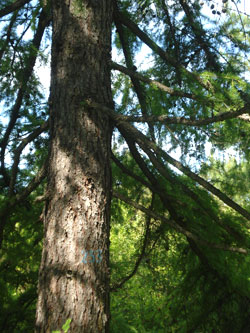
BIODEVERSITY COCERVATION
Botanic gardens and arboretums take on more significance in the field of plant kingdom protection. Plant introduction is an effective and often the only methods of biodiversity concervation.
Collections of botanical gardens represent a reserve of endangered species of natural flora, serve as source of planting material for their further reintroduction, replenishment of number and restoration of natural populations. Owing to its availability, collections can be used for scientific and educational activities and also supply with breeding plant material for commercial nurseries, farming, landscape gardening, forestry etc., which can reduce anthropogenic impact on natural plant populations. Here are also grown species seeds of which cannot be stored in seed banks for a long time.
Many species not provided with protection measures in nature are grown in botanical gardens. Cultivated samples of such species represent insurance fund of these taxons. In any case preservation of the species in the conditions of culture notwithstanding its disadvantages is more preferable than its complete loss.
At present time local flora woody plants are presented in the collection with 46 species of 26 geneses of 15 families. Collection of rare and endangered wooden species numbers 42 species.
Collection also contains other rare for the territory of our region plants including herbaceous.
Having the richest on the territory of Arkhangelsk region collection of main forest-forming species, the NRIF Dendrological garden possesses a great potential for preservation of their genofond. Collection numbers 18 spruce taxons, 15 pine taxons, 12 larch taxons, 10 abies taxons, and 3 Douglas fir taxons.


Larch collection is of a great value, it is notable not only for species diversity but for efficient amount of geographical origins and especially of local populations of Sukachev`s larch (Larix sukaczewii Dyl.). Representativeness of variants with enough number of trees allows counting larch collection along with geographical cultures of the region among experimental objects of high significance for complex studies of adaptation potential and preservation of biodiversity of main forest-forming species.
The value of Sukachev`s larch collection is also confirmed with population studies of this species carried out on the territory of our region. Scientific research were conducted using grant funds of Arkhangelsk region Administration and RFFI-North Fund jointly with other scientific organizations. It was found that three separate groups of Sukachev`s larch populations grow on the territory of our region. Each of these groups is sufficiently presented in the collection.

